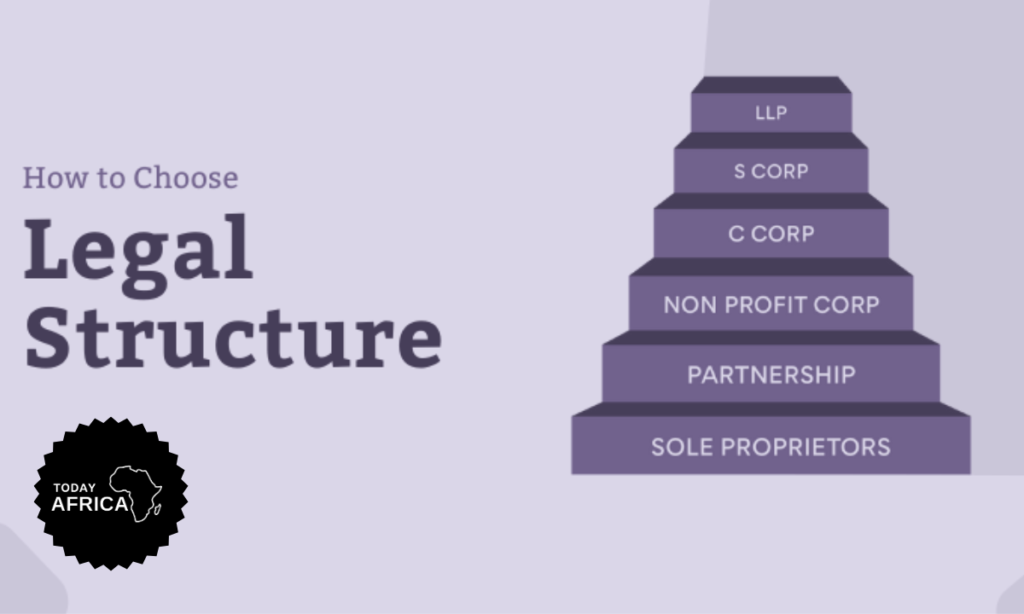Choosing the right legal structure for a business is one of the most critical decisions you will make when starting your business. This decision will significantly impact your business’s taxes, liability, and overall management structure.
But, it can be overwhelming to determine which structure is the best fit for your business. That’s why we’ve written this blog post to help you navigate the process of selecting the right structure for your business.
Without further ado, let’s jump into it.
What are Legal Structures?
Before diving into the specific types of legal structures, it’s important to understand what a legal structure is. A legal structure defines how your business will be organized, who will own it, how it will be taxed, and how it will be regulated. The choice of legal structure can impact various aspects of your business, including personal liability, taxation, and operational flexibility.
Why is a business legal structure important?
1. Taxes: Sole proprietors, partnership owners, and S corporation owners categorize their business income as personal income. C corporation income is business income separate from an owner’s personal income. Given the different tax rates for business and personal incomes, your structure choice can significantly impact your tax burden.
2. Paperwork: Each business legal structure has unique tax forms. Additionally, if you structure your company as a corporation, you’ll need to submit articles of incorporation and regularly file certain government reports.
Read Also: Top 21 Startup Accelerators in Africa
3. Hierarchy: Corporations must have a board of directors. Corporate hierarchies also prevent business closure if an owner transfers shares or exits the company, or when a founder dies. Other structures lack this closure protection.
4. Registration: A business legal structure is also a prerequisite for registering your business.
5. Fundraising: Your structure can also block you from raising funds in certain ways. For example, sole proprietorships generally can’t offer stocks. Your initial choice of business structure is crucial, although you can change your business structure in the future.
Types of Legal Structures
Let’s explore some of the most common legal structures available for businesses:
1. Sole proprietorship
A sole proprietorship is the simplest legal structure. In this model, the business is owned and operated by a single individual.
Advantages
- Easy to set up: Minimal paperwork is required to establish a sole proprietorship.
- Full control: The owner has complete control over all business decisions.
- Tax benefits: Business income is taxed as personal income, which can simplify tax filings.
Disadvantages
- Unlimited liability: The owner is personally liable for all debts and legal actions against the business.
- Limited funding options: Raising capital can be more challenging as it relies primarily on personal funds and loans.
2. Partnership
A partnership involves two or more individuals who share ownership and responsibilities for the business. There are different types of partnerships, including general partnerships and limited partnerships.
Advantages
- Shared responsibilities: Partners can divide management duties and share the workload.
- Access to capital: Partnerships can pool resources and funding from multiple individuals.
- Tax pass-through: Income is passed through to partners and taxed as personal income.
Disadvantages
- Joint liability: Partners are personally liable for business debts, which can put personal assets at risk.
- Potential conflicts: Differences in opinions and management styles can lead to conflicts among partners.
Read Also: How to Grow Your Business on a Tight Budget
3. Limited Liability Company (LLC)
An LLC combines the flexibility of a partnership with the liability protection of a corporation. Owners (members) are typically not personally liable for business debts.
Pros
- Limited liability: Members are generally protected from personal liability for business debts.
- Tax flexibility: LLCs can choose how they want to be taxed—either as a sole proprietorship, partnership, or corporation.
- Fewer formalities: LLCs have fewer ongoing compliance requirements than corporations.
Cons
- Self-employment taxes: Members may be subject to self-employment taxes on business profits.
- State variations: Rules and regulations governing LLCs vary by state, which can affect compliance.
4. Corporation
A corporation is a separate legal entity owned by shareholders. Corporations offer the highest level of liability protection but come with more regulations and formalities.
Advantages
- Limited liability: Shareholders are not personally liable for corporate debts.
- Capital raising opportunities: Corporations can issue stock to raise capital, making them more appealing to investors.
- Perpetual existence: Corporations continue to exist independently of their owners, allowing for smoother transitions in ownership.
Disadvantages
- Double taxation: Corporate profits may be taxed at both the corporate and shareholder levels.
- Complexity and cost: Establishing and maintaining a corporation involves more paperwork, formalities, and costs.

5. S Corporation
An S Corporation is a special type of corporation that meets specific Internal Revenue Code requirements. It allows income to pass through to shareholders without facing double taxation.
Pros
- Tax benefits: Income is taxed at the shareholder level, avoiding double taxation.
- Limited liability: Shareholders enjoy the same liability protection as traditional corporations.
Cons
- Eligibility restrictions: S Corporations have limitations on the number of shareholders and types of allowable shareholders.
- Increased formalities: S Corporations must adhere to stricter operational processes than LLCs or sole proprietorships.
6. Non-profit Organization
A non-profit organization is formed to carry out charitable, educational, or social purposes. Non-profits can apply for tax-exempt status.
Advantages
- Tax-exempt status: Non-profits may be exempt from federal income tax and can receive tax-deductible donations.
- Grants and funding: Non-profits can access grants and funding opportunities not available to for-profit entities.
Disadvantages
- Limited profit distribution: Non-profits cannot distribute profits to members or shareholders.
- Strict regulations: Non-profits face stringent regulations and compliance requirements.
Read Also: 13 Proven Strategies to Scale Your Small Business
Factors to Consider When Choosing a Legal Structure for Your Business
When deciding on the legal structure for your business, several factors should be carefully considered:
1. Liability protection
One of the primary considerations is the level of personal liability protection you desire. If you want to limit your personal risk, structures like LLCs and corporations offer more protection compared to sole proprietorships and partnerships.
2. Tax implications
Different legal structures have varying tax consequences. For example, sole proprietorships and partnerships typically benefit from pass-through taxation, while corporations face double taxation. Consider how each structure will impact your business’s tax situation.
3. Management and control
Think about how you want to manage your business. A sole proprietorship provides full control, while partnerships require shared decision-making. Corporations involve a board of directors and shareholders, which can lead to less direct control.
4. Funding and investment opportunities
If you plan to seek outside investment, consider how attractive your business structure will be to potential investors. Corporations and LLCs may be more appealing due to limited liability and the ability to issue stock.
5. Regulatory requirements
Different structures have different regulatory requirements. Corporations face more regulations and compliance obligations than sole proprietorships and partnerships. Make sure you are prepared to handle the ongoing requirements of your chosen structure.
Conclusion
Choosing the right legal structure for your business is a critical decision that will impact your liability, taxes, and overall management. By understanding the advantages and disadvantages of each structure, along with the key factors to consider, you can make an informed decision that aligns with your business goals.
Whether you opt for a sole proprietorship, partnership, LLC, corporation, S corporation, or non-profit, it’s essential to seek professional advice from legal and financial experts. They can help guide you through the complexities of each structure, ensuring you choose the best option for your unique business needs.
Follow us on social media for more business opportunities in Africa:
- Facebook: Today Africa
- Instagram: Today Africa
- Twitter: Today Africa
- LinkedIn: Today Africa
- YouTube: Today Africa Studio
















